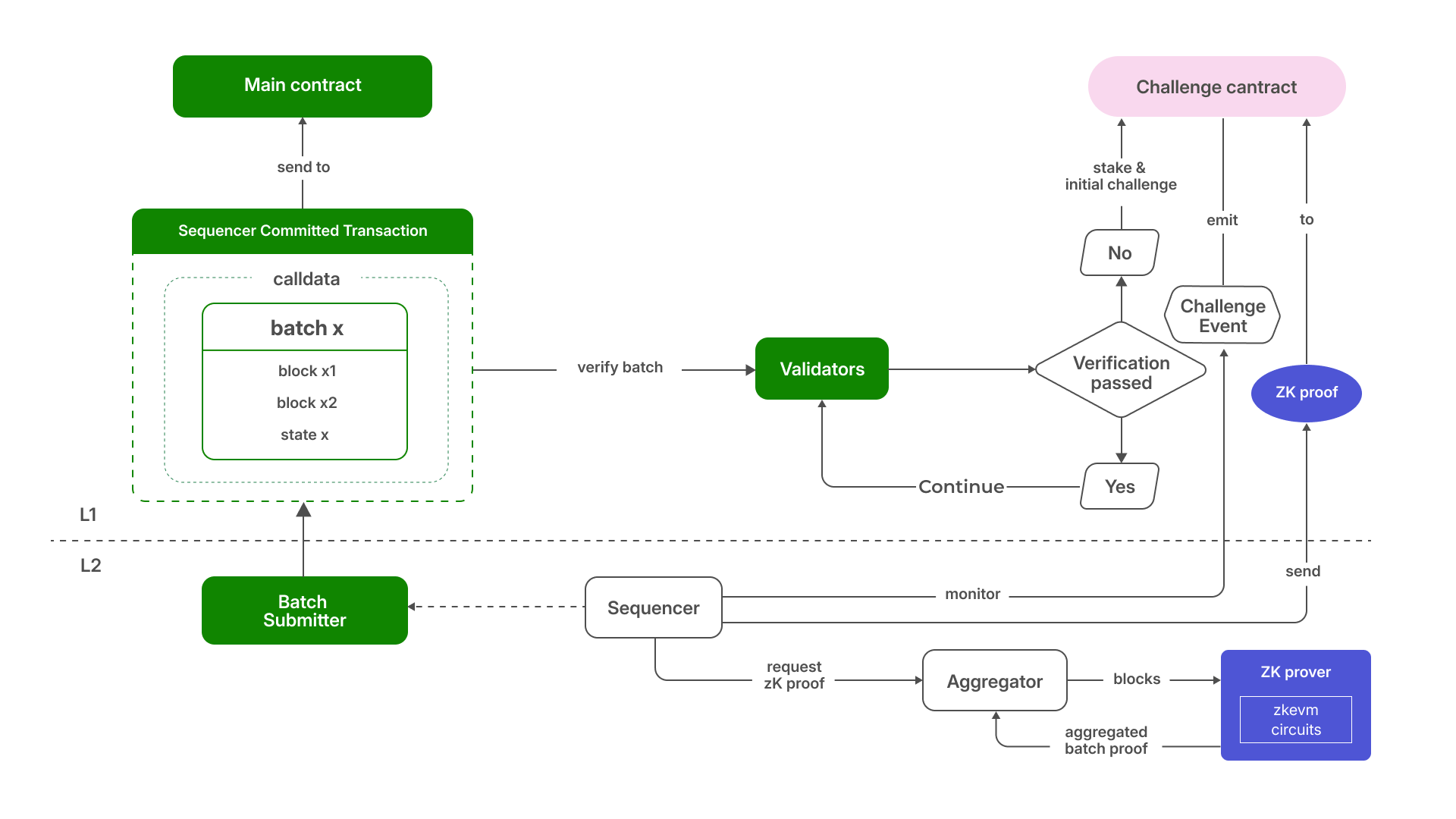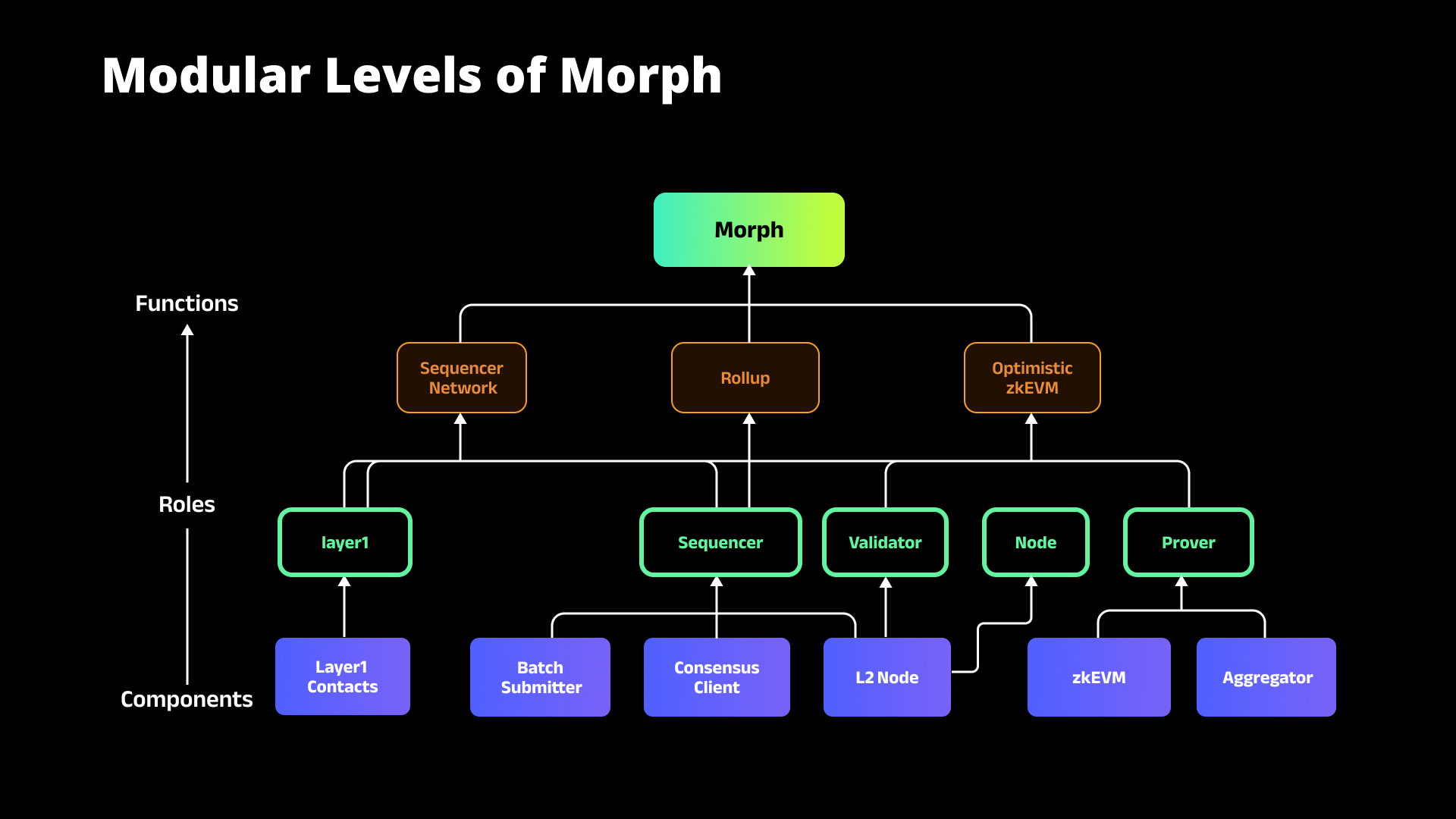The Technology
Decentralized Sequencer Network
Morph's Decentralized Sequencer Network is designed to enhance the security and reliability of the blockchain. Unlike traditional blockchain solutions that rely on a single, centralized sequencer, Morph employs a network of decentralized sequencers. This ensures that no single entity controls the transaction sequencing process, removing the risk of a single point of failure.
If one sequencer fails or acts maliciously, others continue processing transactions, preserving system integrity and uptime. This decentralization also prevents transaction censorship and stops any one party from monopolizing Miner Extractable Value (MEV), creating a fairer environment for all users.
This collaborative structure increases security, improves efficiency, and ensures reliable transaction processing, making Morph a robust and resilient blockchain network.
Visit Morph’s Decentralized Sequencer Network for a more comprehensive article.
Optimistic zkEVM Integration
Optimistic and Zero-Knowledge (ZK) rollups are two different approaches to scaling blockchain transactions on Morph.
Optimistic rollups assume all transactions are valid when submitted for settlement on Ethereum. Any transaction can be challenged by a participant (known as a challenger) who submits proof of fraud. If the fraud proof succeeds, the invalid transaction is rejected. This process ensures security but can introduce delays and higher gas fees due to the challenge process.
ZK rollups use cryptographic proofs to verify transaction validity before submission. Each batch includes its own ZK proof, allowing fast verification on Ethereum without reviewing all transaction data. This offers immediate finality and stronger security, but generating ZK proofs is computationally expensive.
Morph combines these models through Responsive Validity Proof (RVP). Transactions are processed optimistically for speed and cost efficiency. If a transaction is challenged during the challenge window, the sequencer must generate and submit a ZK proof to confirm its validity.
This approach offers two major improvements:
-
Efficiency and speed: The typical 7-day challenge period can be shortened to 1–3 days because challengers no longer need additional time to identify malicious transactions, generate proofs, and engage in lengthy dispute processes.
-
Reduced costs: ZK proofs are only generated when needed. When there are no challenges, the cost of ZK proof submission and verification is avoided, making RVP more cost-effective than both pure optimistic and pure ZK rollups.

Visit Morph’s Modular Design for a more comprehensive article.
Modular Design
Morph is built using a modular architecture that organizes the platform into three core components: Sequencer Network, Rollup, and Optimistic zkEVM. Each module has a distinct role and can operate independently while working together to meet a wide range of operational requirements.
This modular structure increases flexibility and adaptability, making it easier to upgrade individual components without disrupting the entire network. It also improves composability, allowing applications and services on Morph to interact seamlessly and efficiently.

Visit Morph’s Modular Design for a more comprehensive article.